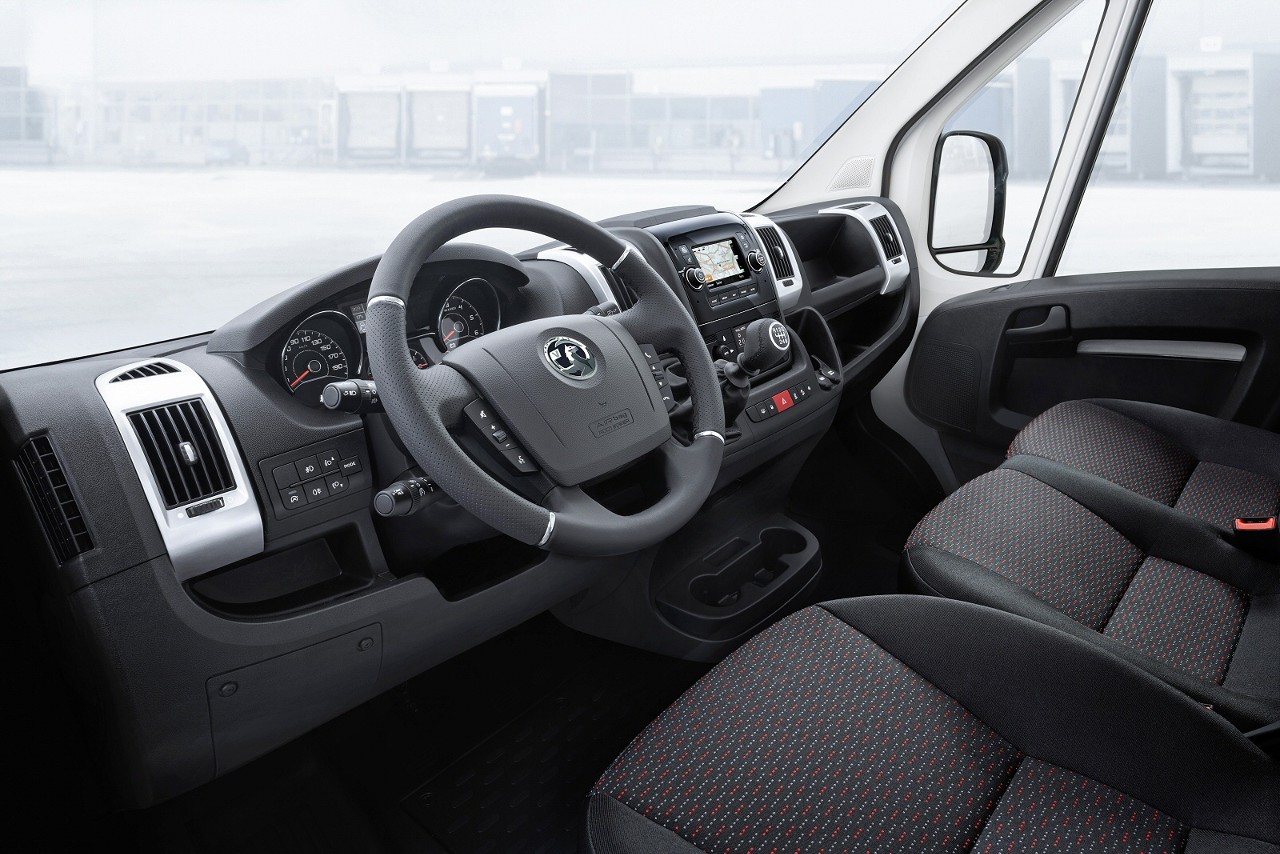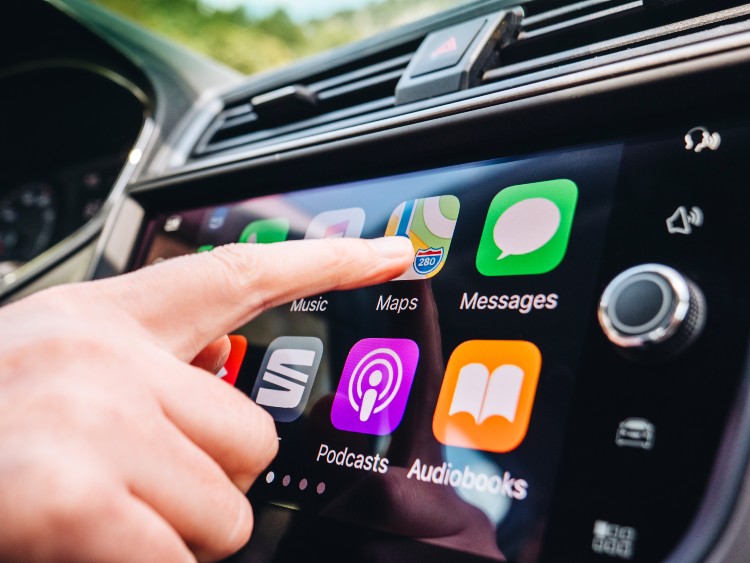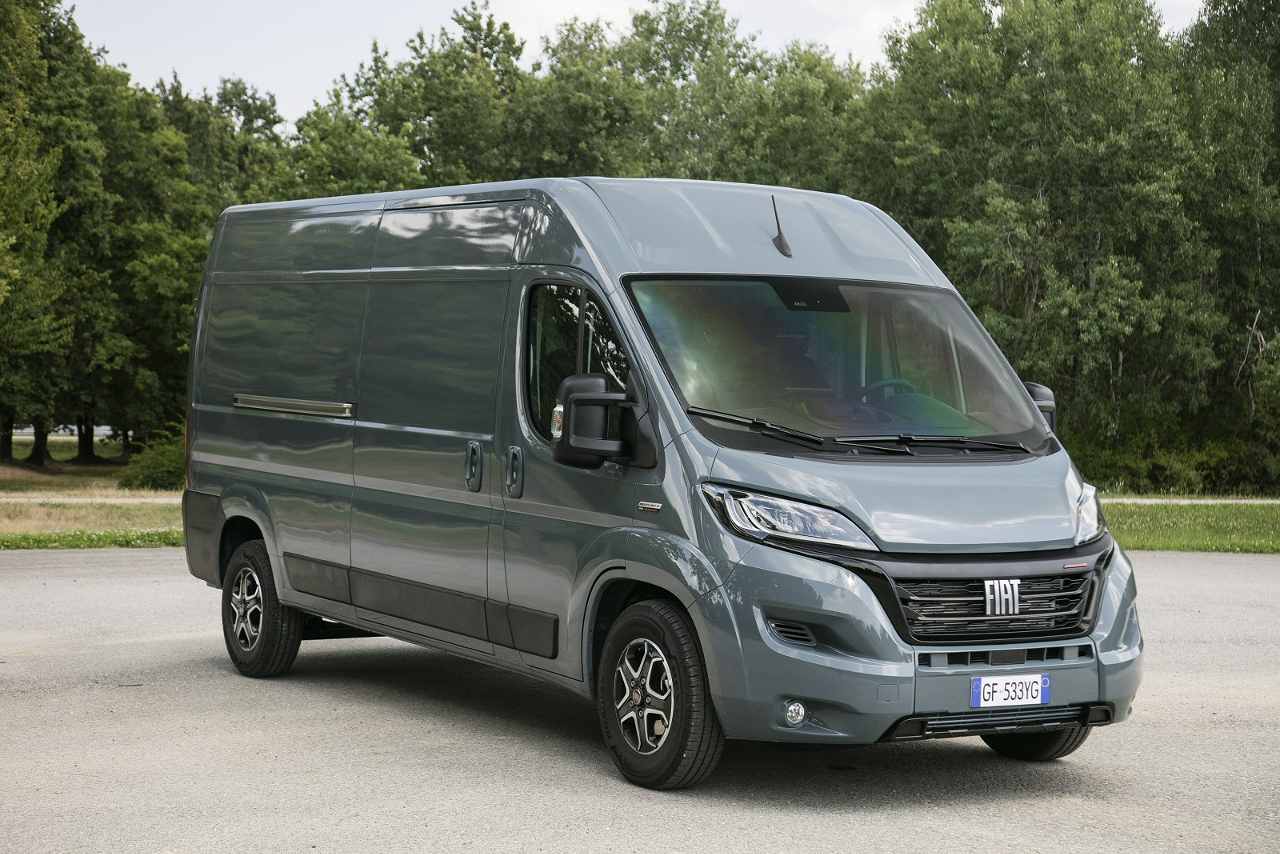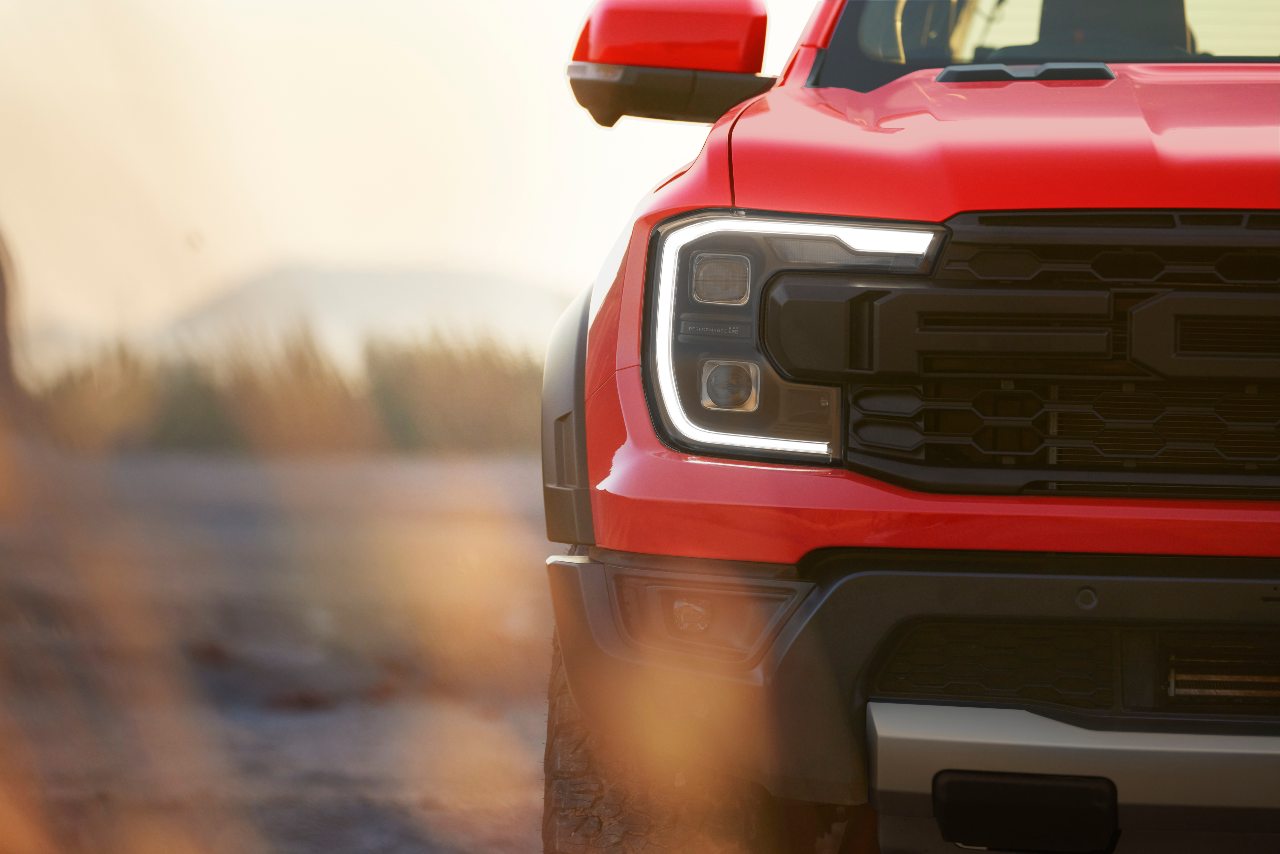**Van and pickup truck safety technology continues to improve and innovate at a fast pace. In 2022, we’re going to see a lot of advanced technologies become standard offerings in the van sector, such as active cruise control, trailer sway control and more. Vanarama Van Expert Tom Roberts reports. **
Around 25 years ago, the amount of equipment fitted to new light commercial vehicles (LCVs) was sparse. You’d probably get a clock and some in-cab entertainment such as a radio cassette unit or, if you’d flashed the cash, a CD player. Safety equipment would probably be limited to seat belts because despite airbags and ABS being fitted to some cars, they had yet to make their presence felt in the commercial vehicle market.
Things have changed and continue to - vans and pickup trucks are no longer the poor relation to cars and some are now fitted with state-of-the-art equipment. Let’s take a look at the latest safety tech and driver aids for 2022, and what they mean to the modern LCV driver.
Active Cruise Control
Most of us will be familiar with cruise control. Set the speed, take your foot off the gas and the vehicle will maintain the speed automatically. Some systems will even apply the brakes to prevent over speeding down gradients. But how annoying is it when you approach a slower vehicle and are unable to overtake? A quick tap of the brake pedal knocks off the cruise control - sometimes quite jarringly - and you’ll have to wait until the road is clear to resume the preset speed.
Active cruise control adds a forward-facing distance sensor (or radar) into the equation. As it detects the slower car ahead, it will reduce speed automatically maintaining a safe distance. As you pull out to pass when safe to do so, the system senses that the road ahead is clear and the van accelerates back up to your preset speed. Very clever stuff.
Crosswind Assist
Driving a van, especially a large one, in strong winds isn’t for the faint hearted. Gusts can force the van off course, potentially into oncoming traffic or make you swerve unintentionally into a motorway lane. Crosswind Assist is now offered by a number of van manufacturers. Above a certain speed (typically 50mph) sensors detect when the van is being pushed sideways. This effect is countered in one of two ways. Either the brakes are instantly applied on one side of the van only which pulls the vehicle back into a straight line, or, now electric power steering is becoming more commonplace, the system counters the impending change in the vans direction with opposing effort through the steering.
Trailer Sway Control
If you’ve ever seen a trailer sway or ‘snake’, causing the towing car to swerve as the driver tries to regain control, you’ll certainly remember it. A frightening experience for anyone who encounters it and, in serious cases, the phenomenon can cause complete loss of control of both the vehicle and its trailer.
Trailer Sway Control can detect its imminent onset by comparing the ‘yaw rate’ of the vehicle with the steering direction, instantly reducing engine torque while simultaneously gradually increasing braking effort, potentially eliminating the sway before it has even been noticed by the driver. That is cutting-edge tech right there.
Autonomous (Or Automatic) Emergency Braking / Pre-Collision Assist
Using the same forward-facing radar technology as Active Cruise Control, AEB detects a potential imminent collision if you approach a vehicle or large object too quickly. Although manufacturers' systems differ, usually a visible/audible alert will inform the driver that they are approaching an obstruction quickly, and should they fail to respond the brakes will be automatically applied. Some systems will still require driver intervention to bring the van to a complete standstill, while others will stop the van automatically.
Lane Keeping Assist
We’ve all done it - a momentary lapse of concentration and we find we’ve drifted off course. This might be just straying onto the white line or, in serious cases, wandering into an adjacent lane on the motorway, only being alerted by the flashing/honking of another motorist.
By visually monitoring the lines on both the side and centre of the road, the Lane Keeping Assist system detects if the vehicle is at the point of unintentionally crossing them. It’ll take into account intended lane changes by disabling itself if the indicators are in operation. Depending on the vehicle manufacturer the driver can be alerted in a number of ways. From an audible alert, a vibration through the steering wheel or, in some more recent vehicles, the steering direction will be automatically adjusted to get you back on course.
Blind Spot Assist
Rear and side visibility isn’t great in vans. Usually, you’ve no rear window (so no rear view mirror) and no rear side windows to take a quick glance through. The risk of a vehicle being in a blind spot is high. Once again, radar technology comes to our aid, sensing when there is risk and alerting the driver, usually with a visual prompt contained within the door mirror glass - most systems have a bright yellow LED that is very hard to ignore. Precisely what you need!
Traffic Sign Recognition
A forward-facing camera identifies speed limit signs and displays a similar icon in the instrument panel to inform the driver of the current restriction. Often, this image will flash if the speed is being exceeded. If a van is fitted with a heads-up display, this information is often displayed there too in the driver’s field of view.
Multimedia Touchscreens
Most commercial vehicles now include a touchscreen. Centrally mounted, they typically allow access to the radio (often DAB), media inputs such as USB and Bluetooth connectivity allowing for not only hands free phone use, and streaming of audio from apps such as Spotify, Android Auto and Apple CarPlay.
Higher specification vehicles also use the screen to display satellite navigation imagery. Reverse cameras have modernised quickly and some vehicles include a 360-degree vision facility, which creates a composite image of the van from a top-down vantage point. Very clever and extremely useful for reverse parking.
Apple CarPlay / Android Auto
Worthy of its own section here is the increasing inclusion of smartphone integration courtesy of the Apple CarPlay and Android Auto systems. This allows some of the applications on your phone to be ‘mirrored’ onto the vans touchscreen. Probably the most common use is that of Google Maps – the driver being able to use all the features offered by the app including navigation and accurate live traffic conditions. This alone is starting to make the relatively expensive option of a factory fitted sat nav less appealing, the Google product often being considered far superior.
Remote Monitoring
FordPass Connect, Volkswagen We Connect, Mercedes-Benz Me, Vauxhall Connect, Fiat uConnect. Different names but products which provide similar remote services. The vans are fitted with an embedded modem, allowing communication remotely through either a web browser or a smartphone app.
The level of services differ by manufacturer with some of the ‘modules’ being paid for by subscription. Typically though, the van can be monitored remotely and the operator provided with alerts about the vehicles health, imminent service requirements, and even unauthorised movements. The location can be monitored, including where the van has been parked. It can be unlocked or locked remotely and in some cases even started.
Some products allow for the monitoring of driver behaviour, such as poor driving techniques which can cause high fuel consumption or even accidents. In the event of an incident, the system can automatically make an emergency call, alerting the services to the exact location of the vehicle.
Final Thoughts
So, with technology advancing at an unprecedented rate, what we’ll see next in our vans is anyone’s guess. In the meantime, check out Vanarama’s latest leasing offers on the current, state of the art, high tech vans and pickups.






